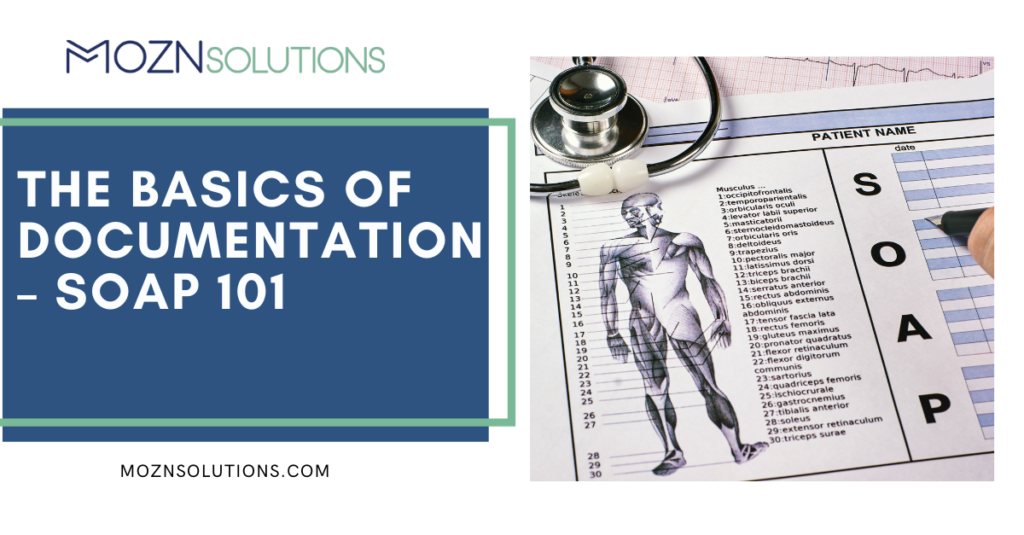
The definition of insanity is doing the same thing repeatedly and expecting different results. As a profession, we have accepted the notion that “the insurance companies don’t count our notes as part of the patient record.” Therefore, we do not take documentation seriously and we sit in this continuous loop of not knowing where our notes stand. If we want our notes to matter, we must show they matter. If we are doing absolutely nothing to improve our documentation standards, why would they change?
Think of writing a SOAP note as writing a story.
Have you ever had to cover for another practitioner and needed to get a good understanding of what is going on with their patient? I bet if you spoke to the clinician on the phone, you would get a much more in-depth review than if you popped open the last three clinical notes in the patient‘s chart. Why is that? In your notes, it is important to create a clear understanding of what you’re currently working on, the medical necessity, how you feel about their progress, and what you’re hoping to do in the next visit or near future.
The basic format for a SOAP note is:
(S) Subjective: This is generally the shortest section of the clinical note. In this section, you will want to add any information that is stated by the patient, family member, or caregiver.
- What is their history with surgeries and/or previous medical treatments?
- What is their stated current level and prior level of function?
- Any stated problems or complaints (related to the prescribed device)?
(O) Objective: Included in this section are facts that can be observed and/or measured. If you performed any outcome measure(s), this is where you would document those findings.
- What objective measures did they perform? How did they score?
- What goals are they working towards? What is their progress?
- What other objective information was written by other medical professionals treating the patient?
(A) Assessment: The assessment is often the hardest section to write and the one section that should be given the highest amount of attention. The assessment should summarize the subjective and objective information while proving the medical necessity for the recommended treatment plan.
(P) Plan: In this last section, the next steps must be thoroughly described. Do not just state “waiting on auth” or “follow-up in two weeks”. Tell the reader, especially if this is an initial evaluation note, what the plan of care looks like over the course of this prescription timeline.
- Be specific on the overall scope of the treatment plan
- Recommendations for referrals beyond your scope of care
- Recommendations for changes of frequency, duration and/use of the device
- Future ideas that you may want to address with the patient
Notes templates are one way to help standardize and guide the documentation process. When used correctly, templates remind practitioners of questions to ask and the medical necessity that needs to be documented, while still telling the whole story. As a bonus, note templates significantly reduce the time it takes practitioners to complete their clinical notes. Most practices I have worked with that use templates have a 24–48-hour turnaround time on notes. While templates can help provide the baseline, keep in mind that you must make them patient-specific.
Remember, clinical documentation isn’t a box to check in a day’s work. It is a way of communicating clearly to your team, referrals, and payors about the patient care progress. Because documentation time is not reimbursable, we must be efficient while creating notes that are defensible and thorough.
Jessica Norrell, MBA, CPO
Written for the Vol 9 No. 3 SPS Xpress
Be the first to comment